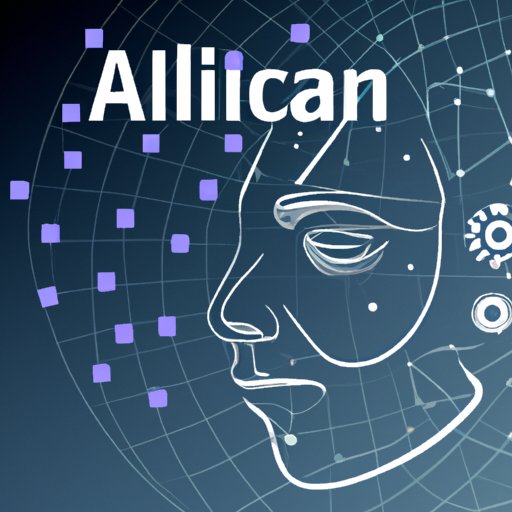Introduction
Artificial intelligence (AI) is a rapidly growing field of computer science that attempts to create intelligent machines that can think for themselves and act autonomously. The purpose of this article is to explore the history of AI, its potential impact on our lives, and the ethical considerations that come with it. We will also examine the different types of AI, such as machine learning and neural networks, and how they work.

A History of Artificial Intelligence
The concept of artificial intelligence has been around since ancient times. As early as 350 BC, ancient Greek mathematicians were attempting to create mechanical devices that could solve mathematical problems. However, it wasn’t until the 1950s that the modern era of AI began. In 1956, a group of scientists at Dartmouth College held a conference to discuss the possibility of creating machines that could think like humans. This event marked the beginning of the field of artificial intelligence.
Since then, AI has continued to evolve and develop. In the 1960s and 70s, researchers began to focus on creating machines that could understand natural language and make decisions based on their environment. In the 1980s and 90s, AI research shifted to creating systems that could learn from data and improve over time. Today, AI is used in many areas, from healthcare to finance to transportation.
Are We Ready for the Future?
As AI continues to evolve, there are growing concerns about its potential impact on our lives. Many experts believe that AI could have a profound effect on the way we live, work, and interact with each other. On one hand, AI could lead to increased efficiency and productivity, as well as new opportunities for economic growth. On the other hand, there are fears that AI could lead to job losses, privacy concerns, and even the rise of autonomous weapons.
It is important to consider both the potential benefits and risks of AI before embracing it. We must ensure that AI is developed responsibly and ethically, and that its use is regulated in order to protect people’s rights and safety.

Understanding the Basics of AI
In order to understand the potential implications of AI, it is important to first understand what AI is and how it works. AI is the process of creating machines or software that can simulate human intelligence. This includes tasks such as problem-solving, decision-making, and learning from experience. AI systems are designed to be able to “learn” from their environment and adapt to changing circumstances.
At its core, AI is a combination of computer science, mathematics, and psychology. It requires a deep understanding of algorithms, data structures, machine learning, and neural networks. All of these components work together to enable machines to “think” like humans and make decisions based on their environment.
Different Types of AI
There are two main types of AI: machine learning and neural networks. Machine learning is the process of using algorithms to analyze data and make predictions. This type of AI is used to identify patterns in data, recognize objects in images, and make decisions based on past experiences. Neural networks are a type of AI that uses interconnected nodes to process data. This type of AI is used for image recognition, natural language processing, and robotics.
In addition to these two types of AI, there are also hybrid systems that combine machine learning and neural networks to create more complex AI systems. For example, some robots use both machine learning and neural networks to recognize faces and respond to voice commands.
Exploring the Ethics of AI
The development and use of AI raises a number of ethical questions. For example, should AI be used to make life-or-death decisions, such as whether or not to deploy autonomous weapons? Should AI be used to replace human jobs, or should it be used to augment existing jobs? These are just a few of the difficult questions that must be considered when developing and using AI.
In addition to these ethical considerations, there are also risks associated with AI. For example, AI systems can be vulnerable to hacking and manipulation. They can also be biased if the data used to train them is not representative of the population. Finally, AI systems can be used for malicious purposes, such as spreading disinformation or facilitating cybercrime.
Conclusion
In conclusion, artificial intelligence has the potential to revolutionize the way we live, work, and interact with each other. But as with any technology, there are ethical considerations and potential risks that must be taken into account. It is essential that AI is developed responsibly and ethically, and that its use is regulated in order to protect people’s rights and safety.
We have explored the definition of AI, its history, and the different types of AI. We have also looked at the potential impact of AI, as well as the ethical considerations that come with it. By understanding the basics of AI and exploring the ethical issues surrounding it, we can ensure that AI is used responsibly and ethically.
(Note: Is this article not meeting your expectations? Do you have knowledge or insights to share? Unlock new opportunities and expand your reach by joining our authors team. Click Registration to join us and share your expertise with our readers.)
